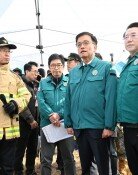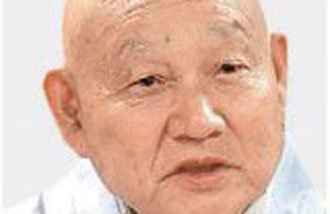Seoul’s slow actions before mass movement of the Chinese
Seoul’s slow actions before mass movement of the Chinese
Posted February. 10, 2020 07:54,
Updated February. 10, 2020 07:54
As the Lunar New Year holiday came to an end on Saturday after having been extended by the Chinese government twice, the concerns about the spread of the Wuhan coronavirus are increasing. More South Korean and foreign nationals are expected to visit Chinese companies while a large number of Chinese students studying in South Korea will return to the country with a new semester starting soon. The South Korean government is repeating its previous stance of “reviewing the expansion of an entry ban” while strengthening disease control is desperately required.
The South Korean government held a Central Disaster Management Headquarters meeting on Saturday regarding responses to the new coronavirus under the leadership of South Korean Prime Minister Chung Sye-kyun. It drew attention whether an entry ban will be expanded to other regions in China, not just Hubei province, as the nation’s 25th patient in her 70s is suspected to have contracted the virus from her family member who visited Guangdong province. According to the World Health Organization (WHO), Guangdong province has the second-highest number of confirmed patients – 1,075 cases as of Saturday – after Hubei.
“We will review expanding an entry ban to other regions in China or other countries after observing future developments for one week and in negotiation with the Chinese governments,” Prime Minister Chung said. The contagious disease alert level will be kept at the current level. “It is concerning that the virus may spread in local communities as it is now slowing down in China and domestic points of transmission are becoming more diverse,” the prime minister said, which is not in line with the solutions he proposed. This is why the government is being criticized for slow responses despite its public announcement to take “seemingly-excessive preemptive measures.”
The government, of course, should consider both diplomatic and economic interests when it comes to dealing with the new coronavirus. However, missing an opportune timing to contain the virus would lead to an enormous impact on South Korean society. As the situation becomes prolonged, businesses, schools, and other public facilities will be paralyzed. Even at this moment, universities across the country are in confusion with what measures should be taken regarding Chinese students coming back from their hometowns and those who visited China or Southeast Asia. Some universities are faced with students’ opposition to the decision to separate dormitories, but there are other concerns raised for accepting such students without any measures taken. In order to prevent such confusion and infection risk in lecture rooms and dormitories, the government should expand an entry ban or put forward overarching quarantine guidelines.
Unlike previous coronaviruses, such as SARS or MERS, the Wuhan coronavirus can be contracted from a patient with no symptoms. In addition, the possibility that the virus may be transmitted through not only droplets but also small solid particles floating in the air or aerosol – which occurs when tiny particles or droplets of the virus suspended in the air are inhaled – has been raised in China. The South Korean government made an official announcement that aerosol transmission is unlikely, but it further contracts the citizens’ activities. The base of disease control is to block points of transmission. Before the domestic disease control network and public health system reach their full capacity, it is crucial to minimize the points through which the virus can be introduced. There is no reason for the South Korean government to bring up criticism for putting its relationship with China first before its people’s health.







